The 25 Essential Tools in Your Leadership Toolbox
Practical, powerful and easy to use tools that will supercharge your leadership
When I first became a manager, I felt like a handyman with a toolbox full of… nothing.
New challenges were flying at me daily: tough decisions, difficult feedback conversations, and unpredictable team dynamics. I was improvising more than leading. And while effort got me part of the way, I quickly realized: effort alone isn’t enough.
Leadership, like craftsmanship, is about using the right tool at the right time.
Over the years, I’ve built up my own leadership toolbox of powerful models and frameworks. I’ve tried them, tested them, adapted them, and discarded a few along the way.
And the ones that stuck have changed everything.
That’s what I’m sharing with you in this post: 25 essential tools that every leader should have within arm’s reach. These aren’t theoretical ideas or concepts. They’re proven, practical tools I’ve used across a variety of situations, and I’m confident they will come in handy for you, too.
Whether you’re building your first team or leading a global org, these tools will help you lead with more clarity, calm, and confidence.
Here’s a sneak peek of what’s inside:
So grab your metaphorical toolbox 🧰. We’re about to load it up.
Tool #1 — Mind-boxing (Scheduling)
“The key is not to prioritize what’s on your schedule, but to schedule your priorities.” — Stephen Covey
Time is our scarcest resource, and we need to be more intentional about how we spend it. I developed the Mind-boxing framework for leaders, regardless of level or role, to do just that.
At its core, mind-boxing encourages you to allocate time across strategic vs. tactical work and across your three leadership pillars: people, process, and product. It reveals misalignments between your priorities and your calendar.
How It Works
The framework creates six "boxes" based on two layers (strategy and tactics) and three verticals (people, process, product). Each calendar item should live inside one of these boxes, and together, they reveal whether your time reflects your goals.
When used regularly, it becomes a self-correcting leadership compass.
Applying Mind-boxing
Here are a few practical ways to apply this framework as a leader:
Decide how much time you want to spend in each of the six boxes.
Review your calendar weekly to audit time alignment.
Adjust meetings, blocks, and tasks to better reflect your strategic focus.
References
Tool #2 — Parkinson’s Law (Productivity)
“Work expands to fill the time available for its completion.”
Parkinson’s Law explains why leaders, even high-performers, often feel busy but not productive. The more time we allow for a task, the longer it takes. Not because it’s truly hard, but because urgency is absent.
This concept isn’t just about time efficiency. It’s a mindset shift that challenges leaders to work with clearer constraints, better focus, and deliberate urgency.
How It Works
When you assign tighter deadlines or smaller time blocks, you activate sharper decision-making and reduce overthinking. Parkinson’s Law doesn’t advocate for rushing. It encourages purposeful limits to avoid time waste.
It’s a call to protect your time like a scarce resource, not an infinite runway.
Applying Parkinson’s Law
Here are a few practical ways to apply this framework as a leader:
Timebox key activities: set aggressive (but realistic) limits.
Limit meeting durations to create sharper focus.
Use deadlines to unlock momentum on stuck projects.
References
Tool #3 — Ikigai (Purpose and Fulfilment)
“When you do what you love, what the world needs, what you’re good at, and what you can be paid for — you’ve found your Ikigai.”
Ikigai, a Japanese concept, translates loosely to “reason for being.” It sits at the intersection of passion, mission, vocation, and profession, and helps leaders find a deeper alignment between who they are and what they do.
In fast-paced careers, it’s easy to drift into autopilot. Ikigai reconnects you to meaningful work that sustains both performance and well-being.
How It Works
Visualized as a Venn diagram of four overlapping circles:
What you love
What you’re good at
What the world needs
What you can be paid for
Where all four meet, that’s your Ikigai.
Applying Ikigai
Here are a few practical ways to apply this framework as a leader:
Reflect on your own leadership sweet spot, what energizes and sustains you.
Help team members explore their Ikigai to increase engagement.
Use it to evaluate new roles, career shifts, or strategic pivots.
References
Tool #4 — Maslow’s Hierarchy of Needs (Team Motivation)
“A person’s potential is only realized once their basic needs are met.”
Maslow’s Hierarchy isn’t just a psychological theory. It’s a leadership map. It helps you understand where your team is in terms of their needs, and why some people aren’t ready to sprint when they’re still trying to survive.
Leaders who build trust, safety, and growth in sequence tend to see more durable performance.
How It Works
Maslow’s pyramid has five levels, and this is how each level maps to leadership concerns.
Physiological needs → Personal mastery
Safety needs → Trust
Social needs → Belonging
Self-esteem needs → Recognition
Self-fulfillment needs → Vision
The idea: you can’t skip ahead. Teams need a stable foundation to thrive at higher levels.
Applying Maslow’s Hierarchy
Here are a few practical ways to apply this framework as a leader:
Diagnose where individual team members are on the pyramid.
Focus on psychological safety and belonging before pushing stretch goals.
Align development plans with personal values and goals.
References
Tool #5 — Radical Candor (Giving Feedback)
“Care personally. Challenge directly.” — Kim Scott
Radical Candor is a simple but transformative model for giving feedback. It strikes the balance between being honest and being human, a leadership superpower that builds trust and accountability at the same time.
Without it, leaders often fall into two traps: being too nice (and withholding truth), or being too blunt (and damaging relationships). This framework gives you a reliable way to walk that line.
How It Works
Radical Candor sits at the intersection of two axes:
Care Personally: Show genuine concern for the person
Challenge Directly: Be clear and honest with your message
When both are high, feedback lands well. When either one is missing, you get ruinous empathy, obnoxious aggression, or manipulative insincerity.
Ways to Apply Radical Candor
Here are some ways to make this framework work for you:
Use the model in every 1-on-1 conversation and performance review.
Ask for feedback yourself to model vulnerability.
Debrief your feedback moments and ask yourself: where did you land on the quadrant?
References
❤️ Enjoying the read? Subscribe to The Good Boss to get articles like this every week.
Tool #6 — Aristotle’s Rhetorical Triangle (Persuasive Communication)
“The fool tells me his reasons; the wise man persuades me with my own.” — Aristotle
Leadership is persuasion. Whether you're making a case for a budget, pitching a new initiative, or rallying a team around change, Aristotle’s Rhetorical Triangle gives you a timeless formula to structure any persuasive message.
This model reminds us that logic alone isn’t enough. People need to trust you (ethos), feel something (pathos), and understand your argument (logos).
How It Works
The triangle includes three components:
Ethos → your credibility and trustworthiness
Pathos → emotional connection with the audience
Logos → logical reasoning and evidence
Great communicators use all three, and adjust based on context and audience.
Putting the Triangle Into Action
Here’s how to apply this framework as a leader:
Ethos: Share your relevant experience and build rapport before a pitch.
Pathos: Connect emotionally with stories, metaphors, or shared pain.
Logos: Support your argument with crisp logic, data, and evidence.
References
Tool #7 — Goodhart’s Law (Defining Goals and Metrics)
“When a measure becomes a target, it ceases to be a good measure.” — Charles Goodhart
Goodhart’s Law is a warning for every data-driven leader: if you obsess over a single metric, people will game it. Performance might look better, but behavior and outcomes can degrade.
This model urges leaders to design smarter metrics and anticipate unintended consequences.
How It Works
Once people know what’s being measured, they optimize for the metric, sometimes at the cost of the actual goal. (Check out the story of The Cobra 🐍 Effect for some inspiration of this phenomenon.) The trick is to combine leading and lagging indicators, look at patterns over time, and never rely on one data point.
Applying Goodhart’s Law
Here’s how to apply this framework in real leadership scenarios:
Use dashboards that reflect multiple dimensions of performance.
Use the 2D (Define, Diversify) framework to counter the law (see worksheet below)
References
❤️ Enjoying the read? Subscribe to The Good Boss to get articles like this every week.
Tool #8 — The Swiss Cheese Model (Risk Management)
“Failures rarely happen from one big mistake — they happen when small ones line up.”
The Swiss Cheese Model is a powerful visual metaphor for understanding how complex systems fail, not from a single error, but from multiple small oversights that slip through gaps in defenses. For leaders, it's a reminder that safeguarding performance requires layers of checks, not just one strong process.
Originally developed for safety systems, the model is now widely used in business, healthcare, and leadership to prevent avoidable failures.
How It Works
Imagine every layer of defense as a slice of Swiss cheese — processes, controls, protocols, people. Each has holes (gaps or flaws). When the holes align, risk passes through.
The key is to design multiple, diverse layers, and reduce hole overlap, so issues get caught early.
Applying the Swiss Cheese Model
Here’s how you can use this tool in your leadership role:
Use pre-mortems to identify which “holes” might align.
Build cross-functional checkpoints for critical workflows.
Emphasize redundancy in roles, approvals, or tools for high-risk decisions.
References
Tool #9 — The Four Zones of Psychological Safety (Team Culture)
“People don’t fear hard work — they fear humiliation, judgment, and dismissal.”
The term Psychological Safety was first coined by Dr. Amy Edmondson, a Harvard professor, who defined it as “a shared belief that the team is safe for interpersonal risk-taking.”
The Psychological Safety Framework is a tool to help leaders create a high-performance team culture, one where people feel safe speaking up and accountable for delivering.
How It Works
The framework rests on two dimensions:
Psychological Safety: The freedom to express yourself without fear of judgment or punishment.
Accountability: The responsibility to meet goals and deliver results.
As you plot different levels on a 2x2 matrix, you get four distinct team cultures or ‘zones’:
🛋️ Comfort Zone: High safety, low accountability
😶 Apathy Zone: Low safety, low accountability
😰 Anxiety Zone: Low safety, high accountability
🚀 Learning Zone: High safety, high accountability
Applying the Four Zones
Your goal is to move your team to the Learning Zone, and you can do this by:
Encouraging input from everyone on the team
Setting clear expectations and holding your team accountable
Offer support, not judgment
References
Tool #10 — Tuckman’s 5 Stages (Team Development)
“A team isn’t a group of people who work together. A team is a group of people who trust each other.”
Developed by Bruce Tuckman, the 5 Stages of Team Development outlines the predictable stages that every team goes through, from formation to adjournment. It gives leaders a roadmap for diagnosing team dynamics and supporting growth.
Every stage has friction. The goal is not to avoid conflict but to move through it intentionally.
How It Works
The five stages are:
Forming → team members are polite, but roles are unclear
Storming → tensions rise as personalities and ideas clash
Norming → the team begins to gel and set norms
Performing → high trust, autonomy, and results
Adjourning → the team disbands after the goal is achieved
Leaders must adjust their style at each stage.
Putting This Model Into Practice
Ways to use this framework effectively in your role:
Assess where your team is right now, not where you wish they were.
Name the stage out loud to normalize challenges.
Facilitate rituals (check-ins, feedback rounds) to accelerate progression.
References
🛠️ Want to go deeper? Check out The Ultimate Leadership Toolkit Bundle and supercharge your leadership now!
Tool #11 — The Six Thinking Hats (Group Decision-Making)
“The biggest block to creative thinking is trying to do everything at once.”
Developed by Edward de Bono, The Six Thinking Hats is a model for structured thinking, especially useful in group decision-making. It helps teams explore different perspectives, reduce friction, and break out of tunnel vision.
Instead of chaotic brainstorms, you get focused, parallel thinking.
How It Works
Each “hat” represents a thinking style:
White Hat: facts and data
Red Hat: emotions and gut instincts
Black Hat: risks and weaknesses
Yellow Hat: benefits and value
Green Hat: creativity and possibilities
Blue Hat: process and facilitation
Everyone “wears” one hat at a time to stay aligned in their thinking mode.
Applying the Six Thinking Hats
Consider these approaches to apply it:
Use it to structure brainstorming or planning sessions.
Assign hats to individuals or rotate them in rounds.
De-escalate conflict by clarifying which “hat” you’re in.
References
Tool #12 — The Golden Circle (Vision and Purpose)
“People don’t buy WHAT you do. They buy WHY you do it.” — Simon Sinek
The Golden Circle is one of the most accessible frameworks for inspiring leadership. At its core, it helps you start with why - the purpose or belief that drives your work. Instead of explaining what your team does or how they do it, this model urges you to lead with meaning and connect on a deeper level.
When leaders start with why, they ignite intrinsic motivation. It aligns teams beyond tasks, and fosters emotional engagement, especially during change or ambiguity.
How It Works
Most people explain things like this:
What we do → How we do it → (maybe) Why we do it
The Golden Circle flips the script:
Start with Why → Then How → Then What
Your why is your cause, your belief, the reason you exist. When you lead with that, people listen differently.
Applying the Golden Circle
Here’s how to bring this model to life:
Use it when launching a product, initiative, or change. Frame it with purpose.
Communicate strategy with clarity and conviction.
Help your team reconnect with the “why” behind their work.
References
Tool #13 — The Theory of Constraints (Process Improvement)
“A chain is only as strong as its weakest link.”
The Theory of Constraints (TOC), introduced by Eliyahu M. Goldratt in his book The Goal, helps leaders unlock performance by identifying and addressing the biggest bottleneck in a system. Rather than optimizing everything, TOC focuses attention on the one thing that limits progress.
Whether you're managing operations, a product team, or a large initiative, this tool cuts through noise and drives meaningful change.
How It Works
Every system has a constraint - a limiting factor that governs the pace of results. The TOC process:
Identify the constraint
Exploit it → maximize its output
Subordinate everything else to the constraint
Elevate it → remove or replace it
Repeat
It’s a continuous improvement loop, always focused on leverage.
Applying the Theory of Constraints
Ways to use this framework effectively in your role:
Run retrospectives or root-cause reviews using TOC steps.
Look for non-obvious constraints: approvals, talent, tools, etc.
Align team goals around elevating the current bottleneck.
References
Tool #14 — The 5 Whys (Problem Solving)
“If you want better answers, ask better questions.”
The 5 Whys is one of the simplest and most effective tools for getting to the root of a problem. And it’s a powerful way to lead problem-solving conversations without blame or guesswork.
It’s especially effective in post-mortems, operations, and team discussions where symptoms can mask deeper issues.
How It Works
When a problem occurs, you ask “Why?”, not once, but five times (or more), until you uncover the root cause. Each answer leads to the next question.
It reveals the system failure beneath the surface symptom.
Using the 5 Whys as a Leader
Consider these approaches to apply it:
Facilitate team discussions using the 5 Whys to drive curiosity.
Use it to improve decisions, not assign blame.
Document each level of insight. The fifth “why” often holds the key.
References
Tool #15 — The Animal Risk Matrix (Risk Management)
“Success is about smart risk management, not about wild risk taking.” — Michael Masterson
All leaders face risk, but not all risks are the same. The Animal Risk Matrix uses memorable animal metaphors - Elephant, Black Swan, Gray Rhino, and Black Jellyfish - to help you categorize risks by their predictability and impact. This model transforms vague anxieties into strategic clarity.
How It Works
The matrix plots risks on two axes: predictability (known vs unknown) and probability (low vs high). Each quadrant represents an animal:
Elephant in the Room (Predictable & Common): Everyone sees it but ignores it.
Gray Rhino (Unpredictable & Common): Threats often dismissed until it's too late.
Black Swan (Unpredictable & Rare): Rare, surprising, and powerful events.
Black Jellyfish (Predictable & Rare): Rare but foreseeable risks people often overlook.
Applying the Animal Risk Matrix
Here are strategic ways to use it in your leadership:
During risk assessments, map each identified risk to its animal quadrant.
Assign response strategies: call out elephants early, prepare for rhinos, build resilience for swans, and monitor jellyfish trends.
Use the matrix as a regular leadership ritual: quarterly risk reviews tied to action plans.
References
❤️ Enjoying the read? Subscribe to The Good Boss to get articles like this every week.
Tool #16 — The Three Horizons Model (Business Strategy)
“Strategy is about balancing the now, the next, and the new.” — McKinsey & Company
Leaders are often pulled in two opposing directions: today’s urgent needs vs tomorrow’s strategic ambitions. The Three Horizons Model, developed by McKinsey, gives you a structured way to think across timeframes without losing focus.
This framework is especially helpful during growth phases or times of reinvention. It lets leaders manage performance in the short term, while preparing for disruption and opportunity in the long term.
How It Works
The model breaks your strategic focus into three horizons:
Horizon 1: Current business: optimize and grow core offerings
Horizon 2: Emerging initiatives: scale promising new products or processes
Horizon 3: Future bets: explore bold ideas or new business models
The goal is to operate across all three simultaneously, not in sequence.
Applying the Three Horizons Model
Here are practical ways to apply it:
Audit where your team spends time: Is Horizon 1 crowding out the rest?
Use it as a planning lens for quarterly reviews or off-sites
Assign ownership of initiatives by horizon to clarify focus and accountability
References
❤️ Enjoying the read? Subscribe to The Good Boss to get articles like this every week.
Tool #17 — The Five Dysfunctions of a Team (Organizational Culture)
“Trust is knowing that when a team member does push you, they're doing it because they care.” — Patrick Lencioni
Teams don’t fail because they lack talent, but because of the lack of trust. Lencioni’s Five Dysfunctions of a Team is a classic model that maps out five root dysfunctions that slowly erode team performance from within.
It’s a diagnostic tool to uncover what’s really holding a team back and where to begin healing it.
How It Works
The five dysfunctions, stacked as a pyramid (from bottom to top), are:
Absence of Trust
Fear of Conflict
Lack of Commitment
Avoidance of Accountability
Inattention to Results
Teams must resolve each layer to move upward toward results.
Overcoming the Five Dysfunctions of a Team
Ways to use this framework effectively in your role:
Run a team self-assessment: identify the most visible dysfunction
Use this as a foundation during team coaching or off-sites
Model vulnerability and feedback to rebuild trust at the base
References
Tool #18 — Probabilistic Thinking (Decision-Making)
“Uncertainty is not a flaw — it’s reality. Better decisions come from better probabilities.”
Most decisions aren't black and white. Yet many leaders fall into binary thinking - yes or no, win or lose. Probabilistic thinking helps you reason under uncertainty by estimating odds, not absolutes.
It’s a skill that boosts judgment, especially when stakes are high and data is fuzzy.
How It Works
Instead of asking “What will happen?” ask:
“What are the possible outcomes?”
“What is the likelihood of each?”
“What is the cost of being wrong?”
This approach trains you to evaluate trade-offs, risk, and confidence levels.
Applying Probabilistic Thinking
Here’s how to use this model effectively:
Use probability estimates in key decisions (even rough guesses help)
Run pre-mortems: What could go wrong, and how likely is it?
Create a culture where saying “I’m 70% confident” is respected, not punished
References
Tool #19 — The Hero’s Journey (Storytelling)
“Facts tell. Stories sell.” — Unknown
Whether you're pitching a vision, launching a change, or leading through crisis, your ability to tell stories matters. The Hero’s Journey is a timeless storytelling framework that turns ideas into emotional journeys people can rally around.
It helps leaders inspire, persuade, and humanize their message.
How It Works
The Hero’s Journey follows a 3-part arc:
Departure → the call to adventure, leaving the familiar
Initiation → facing trials, gathering allies, transformation
Return → coming back with insights, wisdom, and change
It’s the story arc behind myths, movies, and great leadership moments.
Applying the Hero’s Journey
Consider these approaches to apply it:
Frame company milestones as journeys, not just metrics
Use storytelling in all-hands, town halls, and off-sites
Personalize your leadership journey when coaching others
References
Tool #20 — Johari Window (Self Awareness)
“Knowing others is intelligence; knowing yourself is true wisdom.” — Lao Tzu
The Johari Window is a simple yet powerful tool that helps leaders understand how they are perceived by others and, importantly, where their blind spots may lie.
Developed by psychologists Joseph Luft and Harrington Ingham, this model increases transparency, trust, and alignment between how you see yourself and how others see you.
How It Works
The window consists of four panes:
Open Area → known to self and others
Blind Spot → unknown to self, known to others
Hidden Area → known to self, unknown to others
Unknown Area → unknown to both
Growth comes from shrinking the Blind Spot and expanding the Open Area through feedback and disclosure.
Applying the Johari Window
Practical ways to use this model:
Ask for feedback to shrink your blind spots
Share more deliberately to build authenticity
Use this in team settings to promote openness and mutual understanding
References
🛠️ Want to go deeper? Check out The Ultimate Leadership Toolkit Bundle and supercharge your leadership now!
Tool #21 — The MoSCoW Method (Prioritization)
“If everything is a priority, nothing is.”
The MoSCoW Method helps teams make tough prioritization choices without endless debate or decision fatigue. It’s especially useful in project planning and when resources are limited.
How It Works
Categorize initiatives or tasks into four buckets:
Must Have → non-negotiable
Should Have → important but not essential
Could Have → nice to have, but optional
Won’t Have (for now) → out of scope
It forces trade-offs and aligns expectations.
Applying the MoSCoW Method
Here’s how to use it as a leader:
Prioritize backlog items or project features
Facilitate team planning sessions using these categories
Use it to frame stakeholder conversations and manage scope creep
References
Tool #22 — The Value Triangle (Execution and Delivery)
“Cost, time, and scope are not constraints — they’re levers. Leaders use them to deliver value.” — Gaurav Jain
The classic Iron Triangle suggests: pick two of cost, time, and scope. But in today’s fast-moving world, that framework feels outdated and limiting. I developed the Value Triangle out of the need to shift the conversation from cost/time/scope as trade-offs to seeing them as strategic levers for value delivery. It encourages leaders to redefine success around impact, not just constraints.
This reframed model helps leaders treat limitations as opportunities.
How It Works
The Value Triangle repositions the traditional constraints through a modern lens:
Cost becomes investment → funding long-term growth, not just expenses
Time becomes frequency → rapid iteration and responsiveness, not fixed deadlines
Scope becomes incremental value → delivering impact in chunks, not all-at-once
Rather than optimizing one at the expense of another, the goal is to use each lever intentionally to deliver meaningful value more often.
Applying the Value Triangle
Here’s how to apply this framework in practice as a leader:
Frame trade-offs around value, not just deliverables. Ask: “What matters most to the customer now?”
Prioritize small, iterative releases (minimum viable products) over monolithic scope to increase agility
Treat cost as a strategic investment rather than a fixed limit, especially in innovation or high-impact initiatives
References
Tool #23 — First Principles Thinking (Problem Solving)
“Reasoning by analogy is lazy thinking. First principles force you to figure it out for yourself.” — Naval Ravikant
First Principles Thinking breaks things down to their fundamentals and rebuilds from scratch. It’s how Elon Musk reimagined space travel, and how great leaders reimagine their companies.
This tool is ideal when existing solutions feel stale or limiting.
How It Works
Three steps to First Principles:
Identify assumptions
Break them down into basic truths
Reconstruct from the ground up
Applying First Principles Thinking
Use this when you need a breakthrough:
Challenge legacy processes or “the way we’ve always done it.”
Break complex problems into root components
Foster curiosity and critical thinking on your team
References
Tool #24 — System 1 and 2 Thinking (Decision-Making)
“Nothing in life is as important as you think it is, while you are thinking about it.” — Daniel Kahneman
Kahneman’s System 1 and 2 Thinking framework explains how we make decisions intuitively (System 1) or deliberately (System 2), and when to use each.
It’s the key to avoiding snap judgments or analysis paralysis.
How It Works
System 1: Fast, automatic, emotional
System 2: Slow, deliberate, analytical
Both systems are useful, but must be used intentionally.
Applying System 1 and 2 Thinking
Here’s how to use this framework:
Slow down important decisions, and ask yourself: “Am I in System 1?”
Use checklists or pre-mortems to activate System 2
Train your team to be conscious of cognitive shortcuts
References
Tool #25 — The 3 Stages of Communication (Communication)
“The biggest problem with communication is the illusion that it has happened.” — George Bernard Shaw
You said it. They heard it. But did they really get it? I developed the 3 Stages of Communication framework to help leaders go beyond information sharing and drive actual understanding and alignment.
How It Works
Stage 1: Inform → Lay out facts and context. Be clear, concise, and relevant. Avoid overloading or hoarding information.
Stage 2: Inspire → Build emotional connection to goals or purpose. Tap into the “why” behind what you’re doing.
Stage 3: Influence → Propel action through aligned communication. Authenticity, timing, and consistency matter.
Applying the 3 Stages Model
Here’s how you can use it in your leadership role:
Begin every major message with Inform: pick facts that matter to your audience.
Add Inspire: connect your strategy or project to a motivating story or purpose.
Close with Influence: guide next steps and anchor decisions in vision and shared ownership.
References
❤️ Enjoying the read? Subscribe to The Good Boss to get articles like this every week.
In Summary: Your Leadership Toolbox
Remember that moment when you were standing in front of a leadership challenge, feeling like a handyman with an empty toolbox?
Well, not anymore.
We’ve just loaded up our toolbox with 25 essential tools that every leader should have on hand. Here’s a snapshot of your leadership toolbox:
Whether you're building trust, tuning up your team’s performance, or building something bold from scratch, the right tool can make all the difference.
👉🏼 If you’re serious about building your muscle in applying the best leadership models in your role as a leader, you may want to check out The Ultimate Leadership Toolkit Bundle (more details below).
So which one of the 25 tools resonated most with you?
👇 Drop your favorite tool in the comments. I’d love to hear what you’re adding to your toolbox.👇
🛠️ The Ultimate Leadership Toolkit Bundle
🚀 Ready to go deeper on the tools discussed in this post (plus dozens more), and expand your leadership toolkit to a whole new level? Check out The Ultimate Leadership Toolkit Bundle.
Based on The Leadership Mastery System™, the bundle helps you master leadership in four proven steps: Learn → Apply → Visualize → Connect. The bundle includes application guides, mind maps, posters, worksheets, and more (for a total of 50 items).
👉🏼 Click here to learn more about the bundle
📘 The Leader’s Playbook
Running out of shelf space? The Leader’s Playbook is a book for your desk, not your shelf. Because it’s not just for reading, it’s for using every day, in real situations, with real teams.
With more than 70 5-star ratings on Amazon, The Leader’s Playbook delivers 75 leadership frameworks, organized, explained, and visualized with 100+ color illustrations. No more wasting your time (and shelf space) on hundreds of leadership books. (Check out the preview below👇.)
👉🏼 Click here to learn more about the book
If you liked this post, consider doing these 3 things:
Hit the ❤️ button and share/restack 🔁 it with others who might find it helpful.
Have a question or comment? Drop your comment below or in our Subscribers’ Chat.
Consider upgrading to the paid plan to support my work, and get free access to a host of premium leadership resources.
I appreciate your support! 🙏



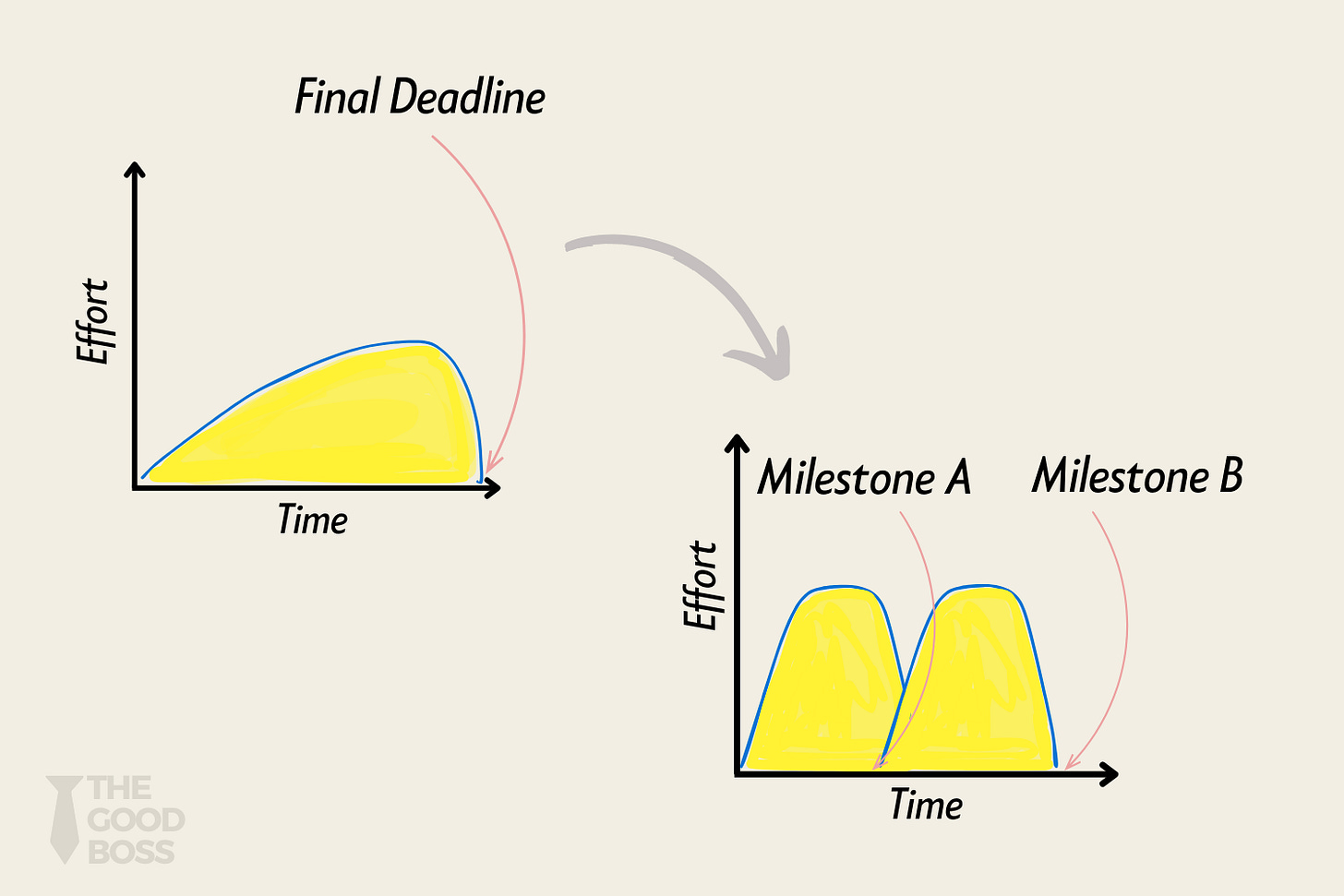
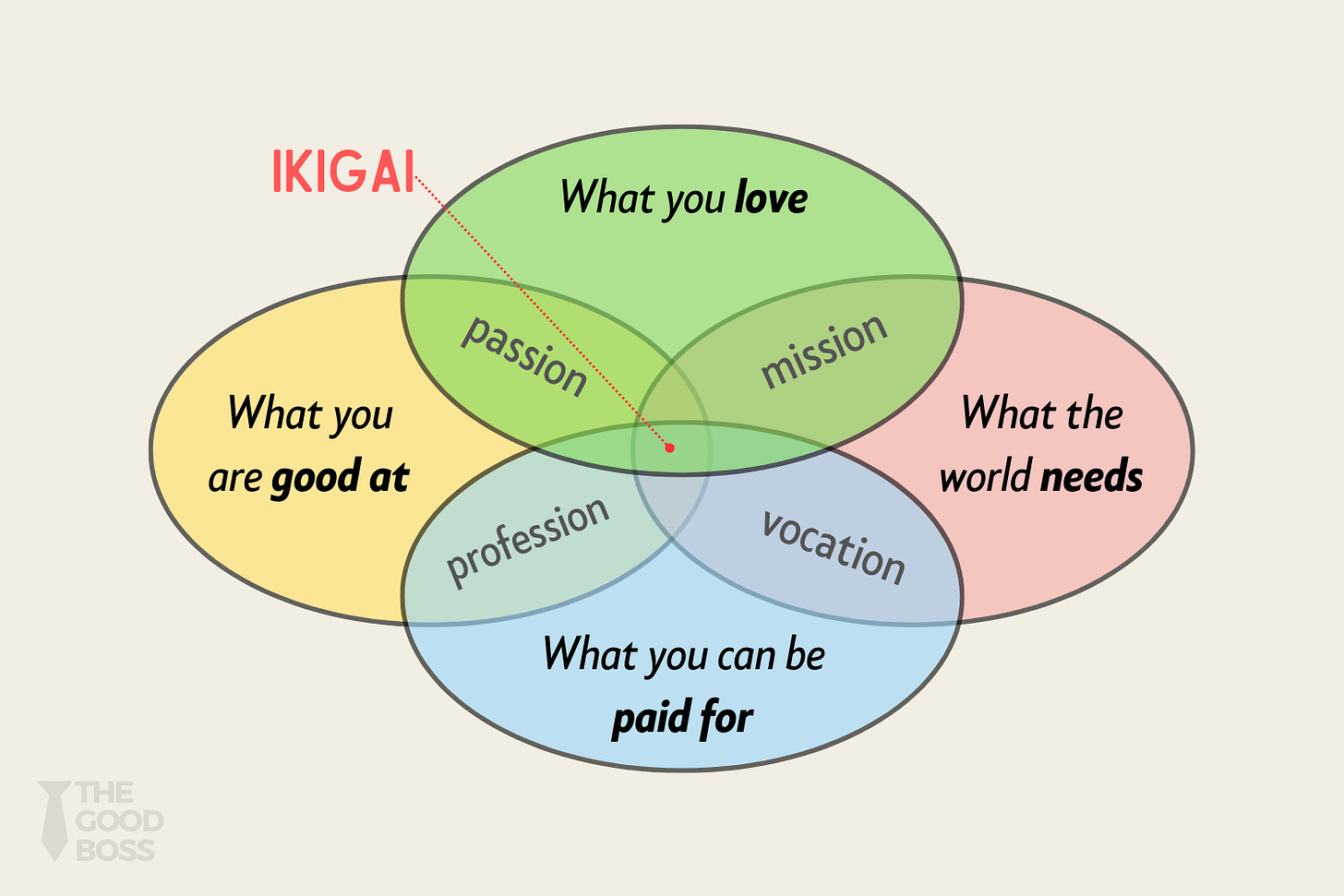
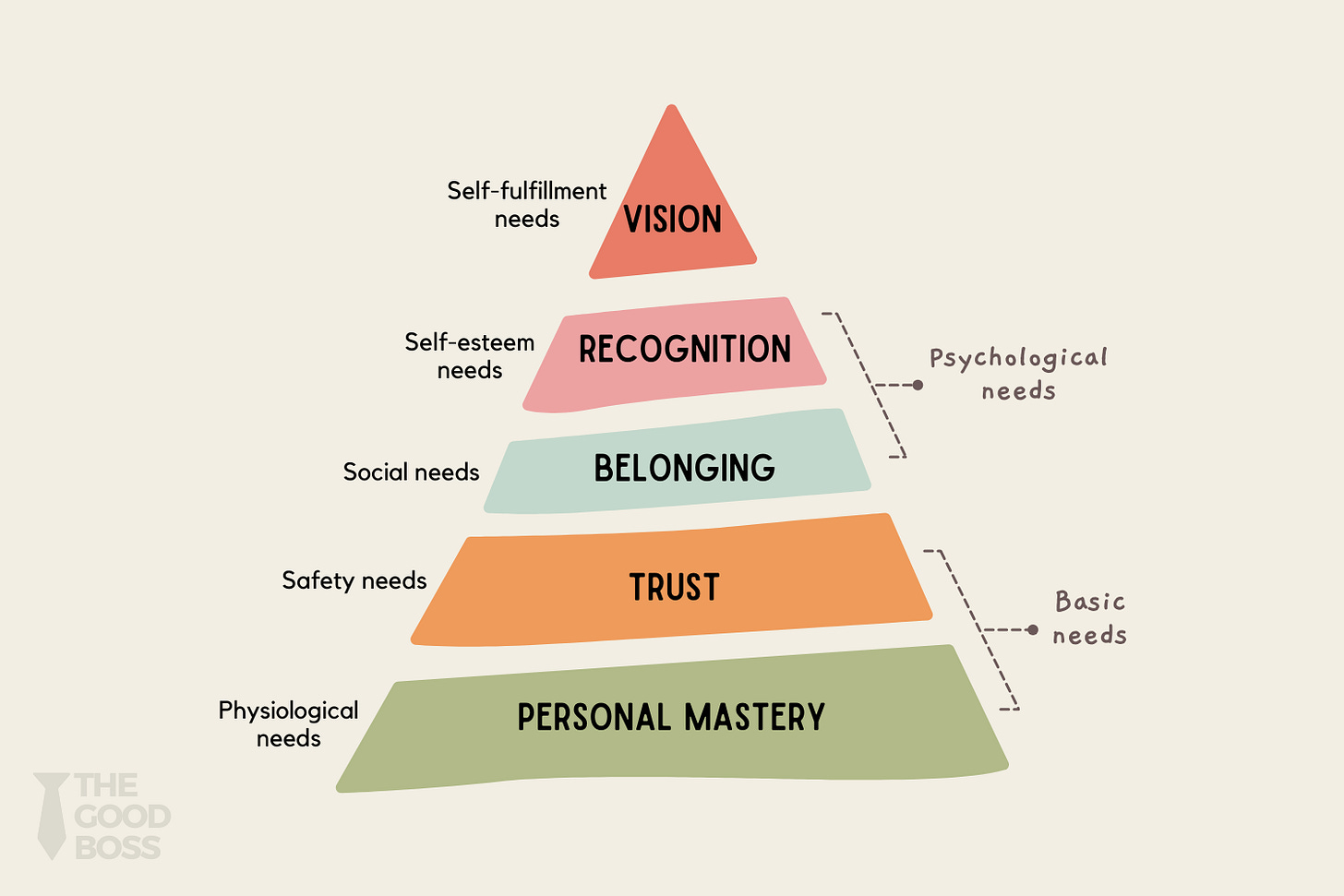

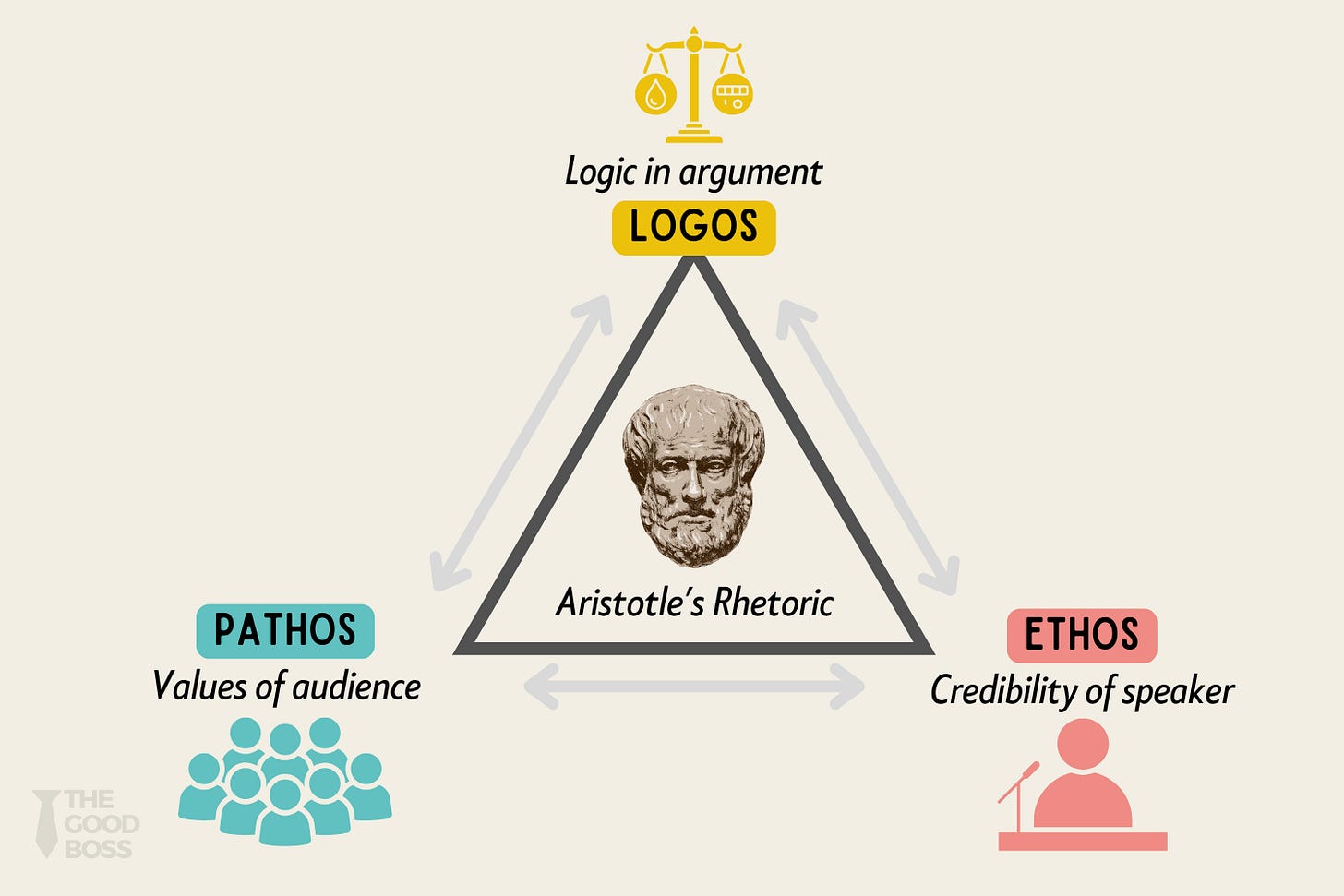
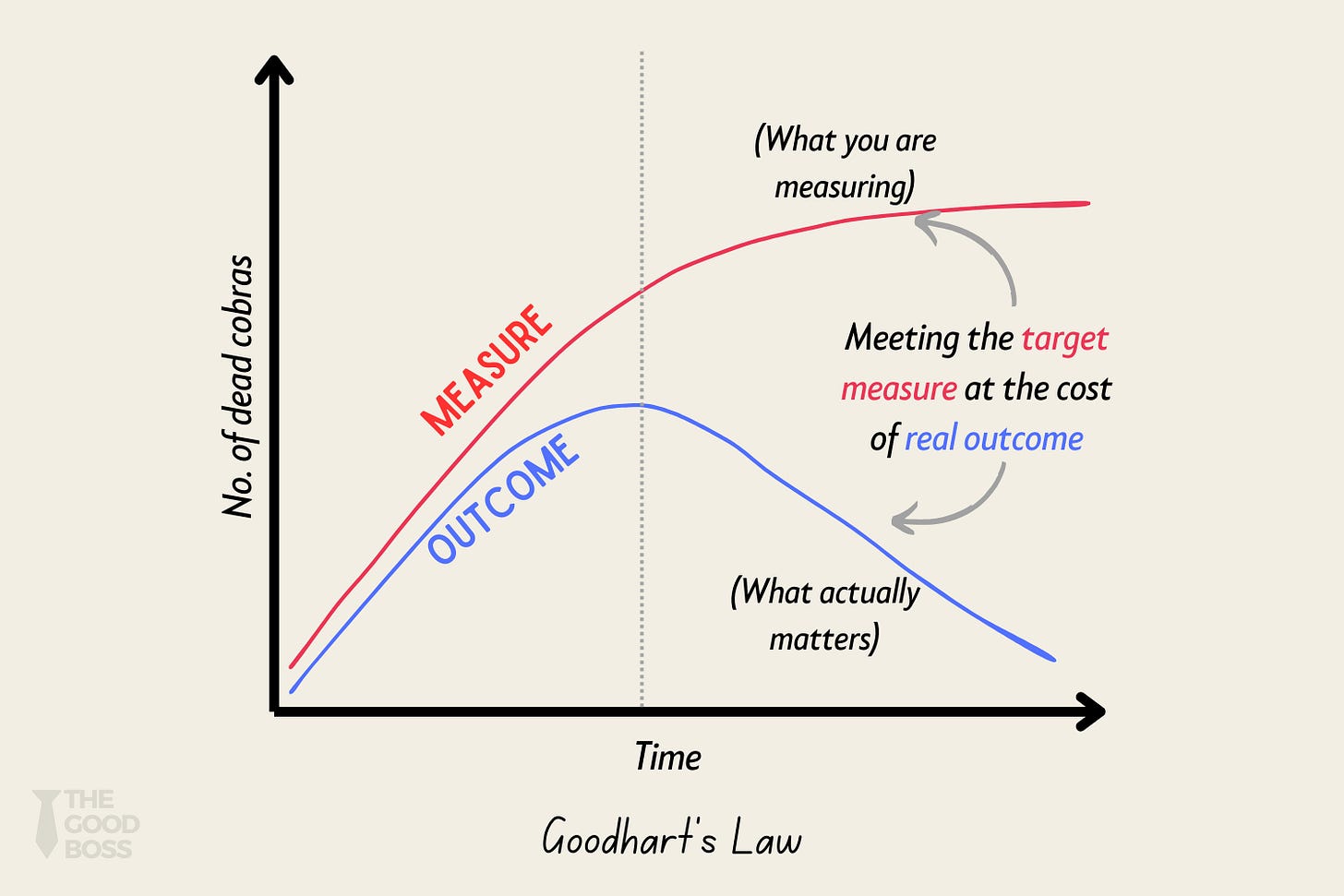
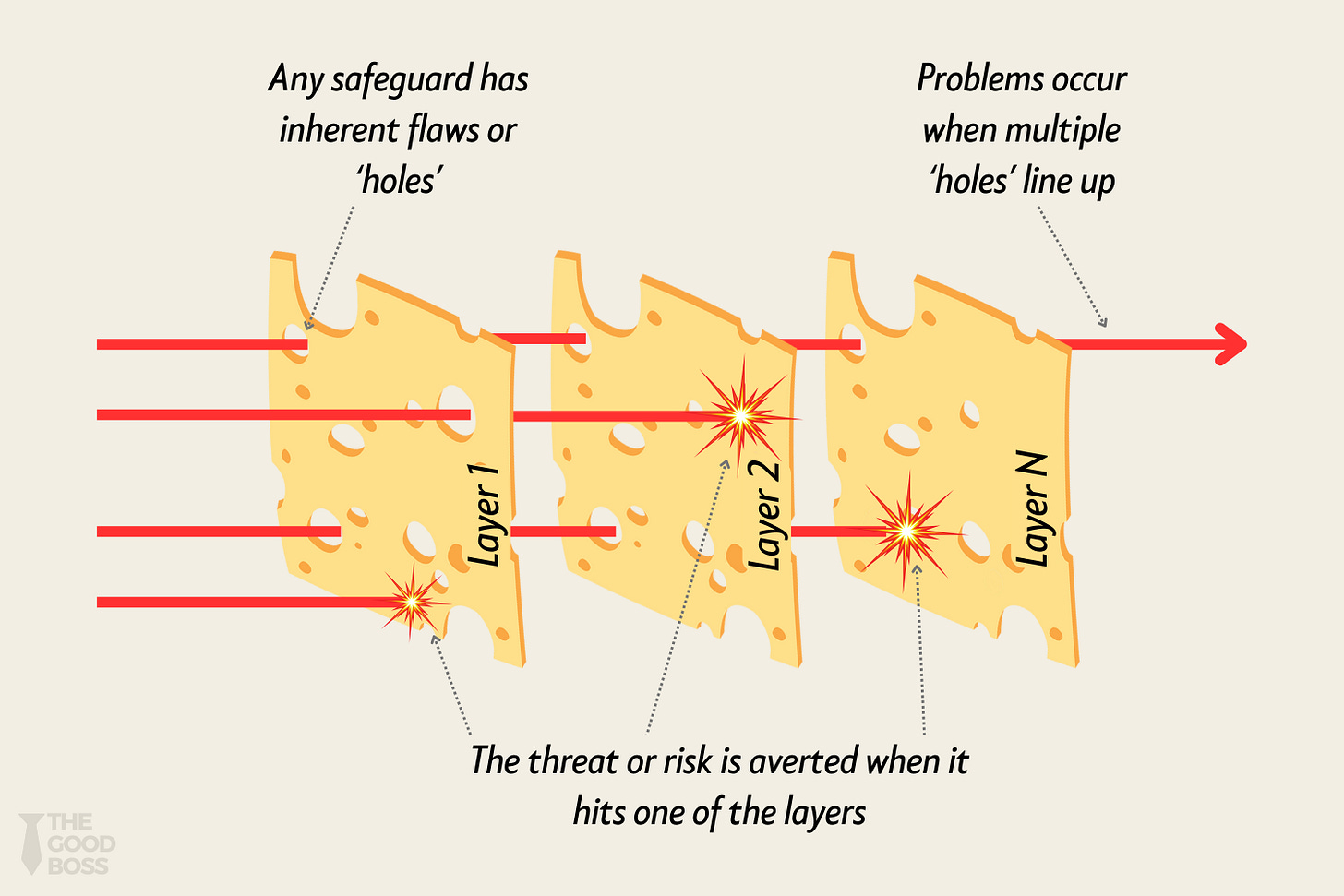


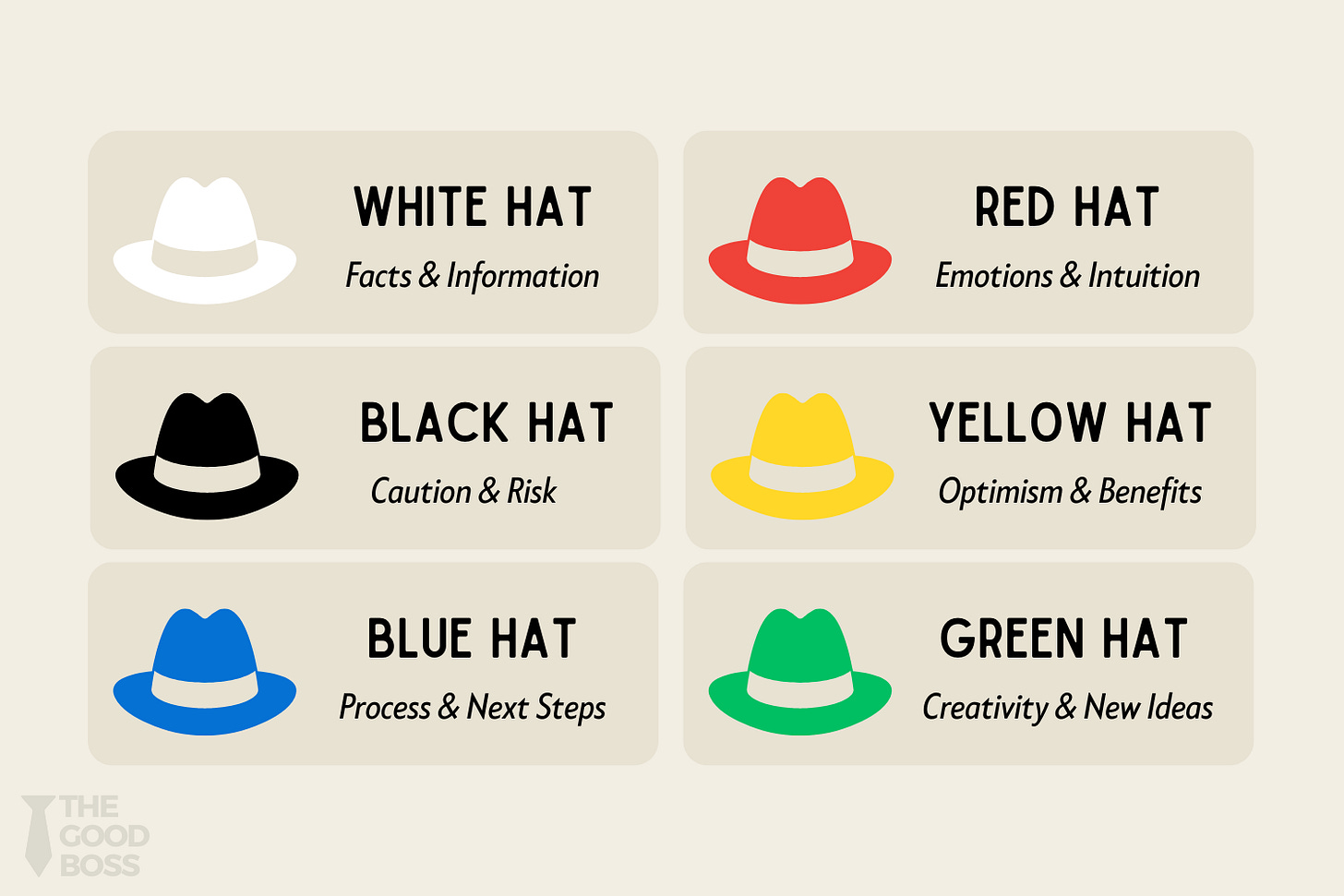




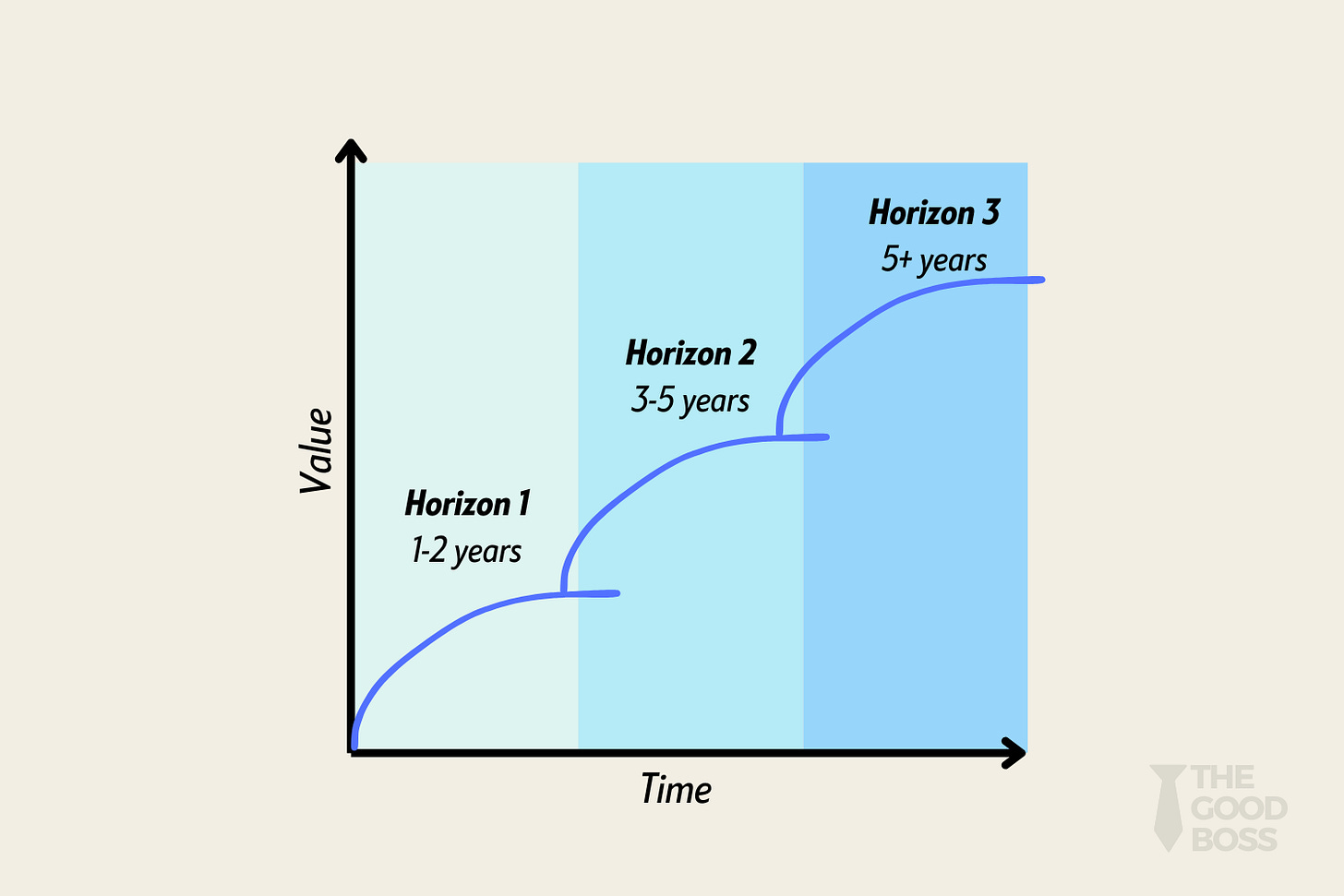





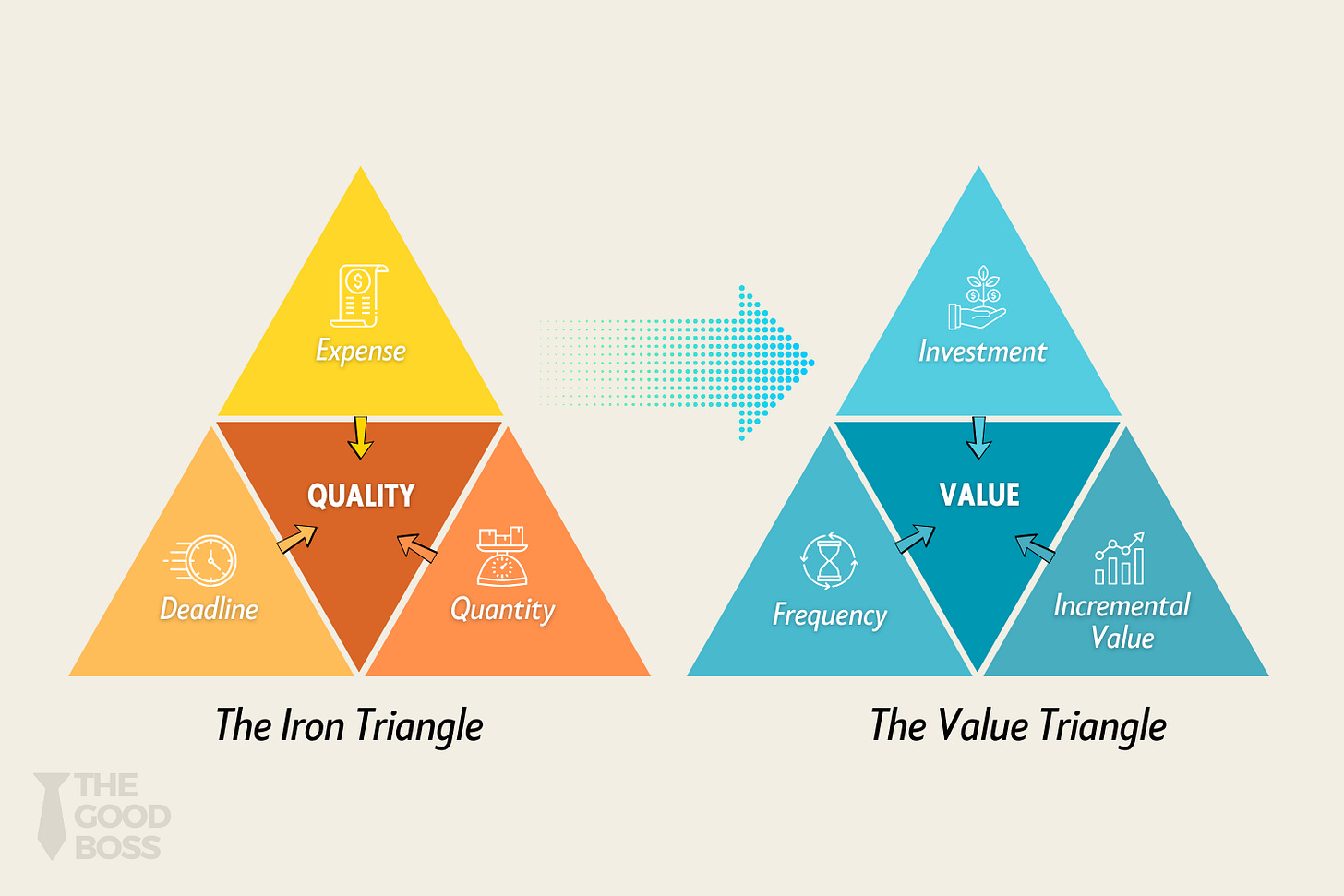
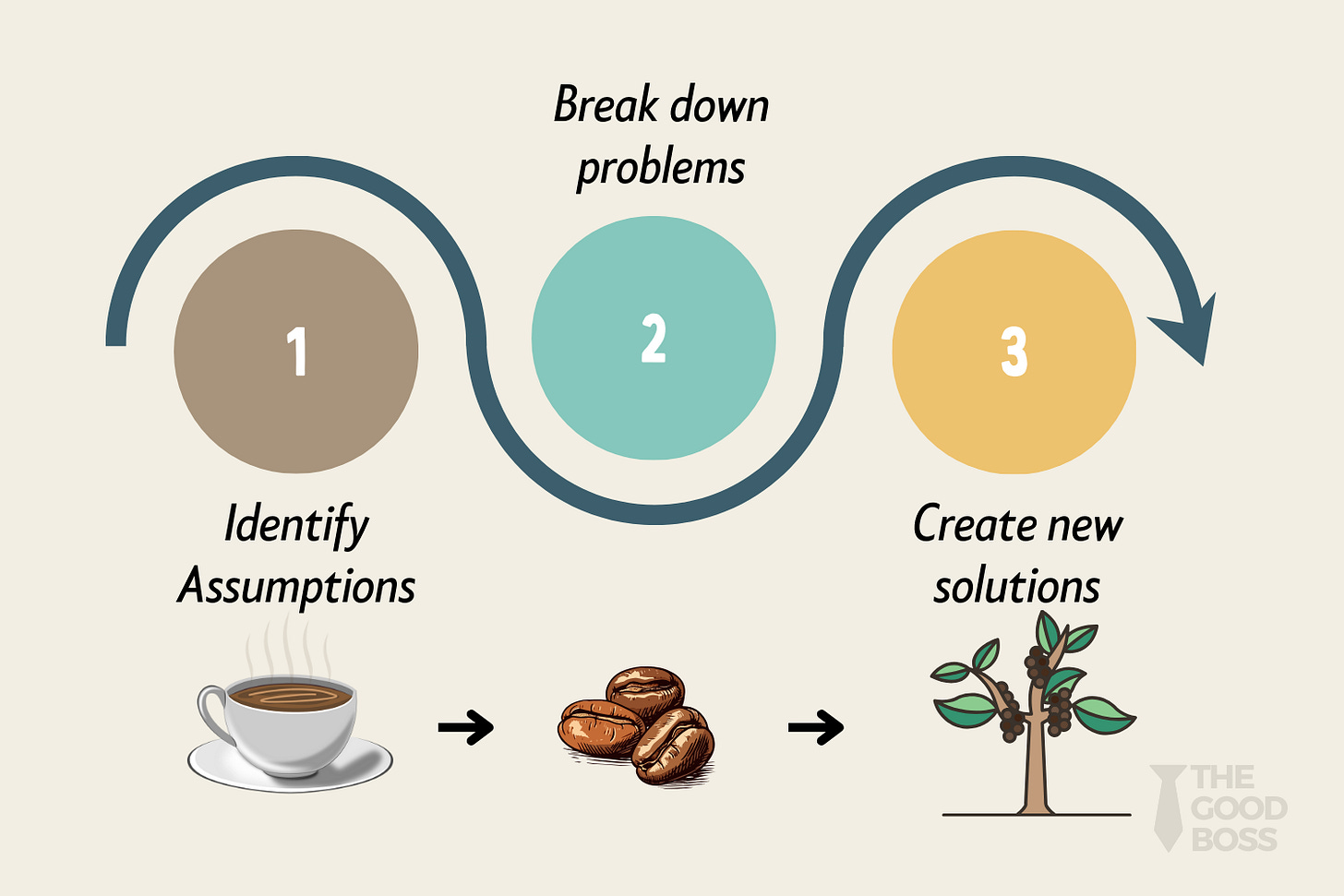



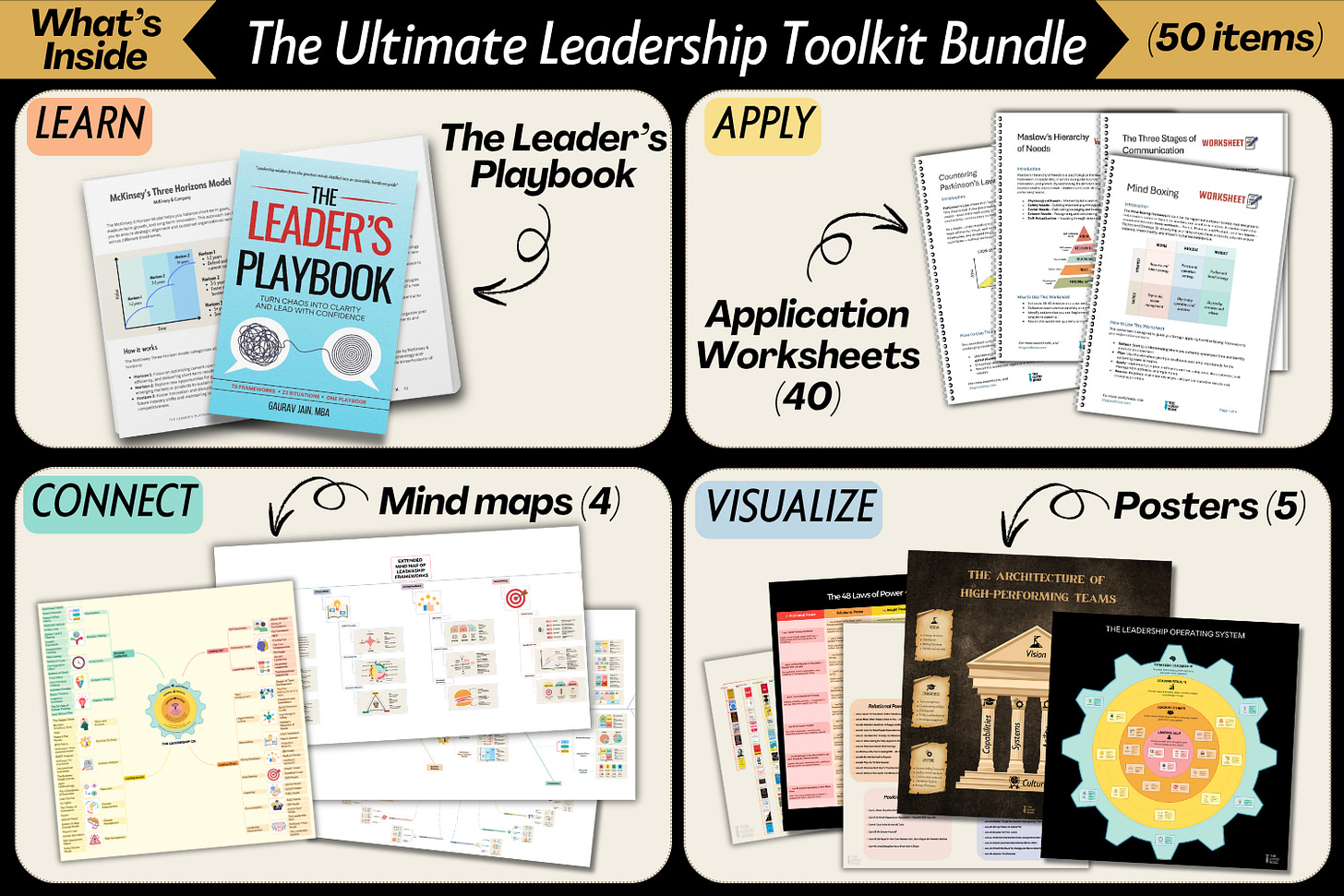

very very insightful and inspiring
So insightful!